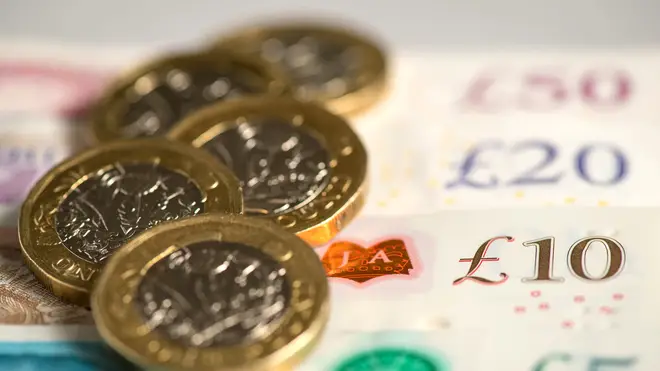
Simon Marks 4pm - 7pm
24 November 2020, 13:24

Scientific testing commissioned by the Bank found the virus does not survive at high levels for very long on banknotes.
The risk of getting coronavirus from handling banknotes is low, according to research published by the Bank of England.
Many shoppers and retailers have avoided handling physical cash during the pandemic, instead turning to alternatives such as cards.
But an article on the Bank’s website said Pin keypads, as well as other surfaces which are touched by several people in shops – such as shopping trolleys, baskets and self-checkouts – also potentially pose a risk.
To understand better how coronavirus behaves on its banknotes, scientific testing was commissioned.
The findings suggest the virus does not survive at high levels for very long on banknotes.
They also suggest there is no material difference in the viability of the virus on polymer or paper banknotes – and that the survival of the virus on banknotes is no greater and could actually be lower than on other surfaces that people often come into contact with.
The quarterly bulletin published on the Bank’s website said: “What therefore is the relative risk associated with handling cash?
“In a retail environment, the major infection risk would be directly from breathing in exhaled droplets or aerosols when in close proximity to an infected person within the shop, or potentially from touching a ‘high touch’ object such as the handles of shopping baskets or shopping trolleys, Pin keypads, products on open shelves or the touchscreens of self-checkout terminals.
“Cash is typically stored securely in wallets, tills or safes, meaning its risk of direct contamination is much lower than exposed surfaces in retail or domestic environments onto which exhaled droplets from an infected person can fall.
“Contamination of banknotes, where it could occur, is most likely to be indirectly by transfer from the hands of an infected person or when someone touches a contaminated surface and then touches a banknote. Any contamination by these routes would be likely to result in much lower levels of the virus than by direct contamination modelled in this study.”
The article said the study involved a very high dose of a coronavirus, “representing a plausible worst-case scenario”, being applied to a banknote.
The dosage was equivalent to someone coughing or sneezing directly onto the note.
The study found the level of virus found on a banknote remained stable for one hour after exposure. Over the next five hours, the amount of the virus present declined rapidly.
After six hours, virus droplets on banknotes had declined to 5% or less of their initial level on both paper and polymer notes, the article said.
It added that plastic and steel surfaces which people may also come into contact with in everyday life were also tested.
Similar declines were noted on these surfaces – although the decline in viability on some of these was not as large as on banknotes.
Importantly, 24 hours after exposure, the virus was only present at very low levels on all surfaces tested by the study.
The bulletin said: “Where contamination does happen, this work shows that the virus typically declines rapidly over a period of hours, and it represents no greater risk than other surfaces people come into contact with as part of their everyday lives.”
It continued: “In summary, any risk from handling cash should be low.
“Current Government regulations to wear masks in shops to minimise the spread of exhaled droplets and aerosols, and Government advice to maintain good hand hygiene to help mitigate any risk from touching the many surfaces that people encounter in their daily or working lives, remains, including when visiting shops.
“Brief interactions with cash are just part of that wider environment and should be viewed in context.”